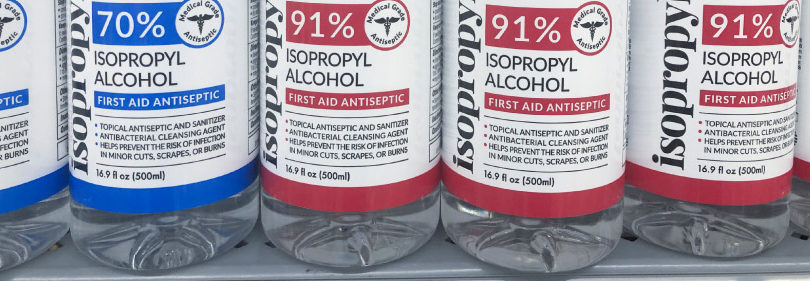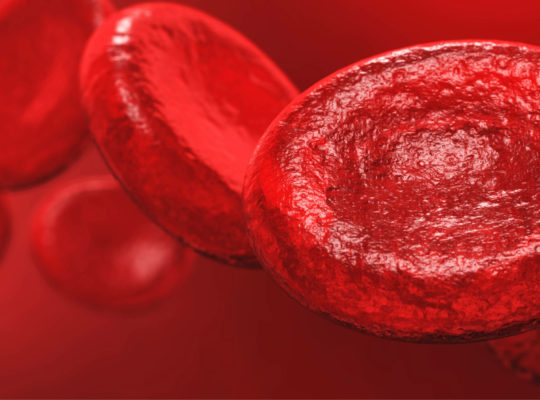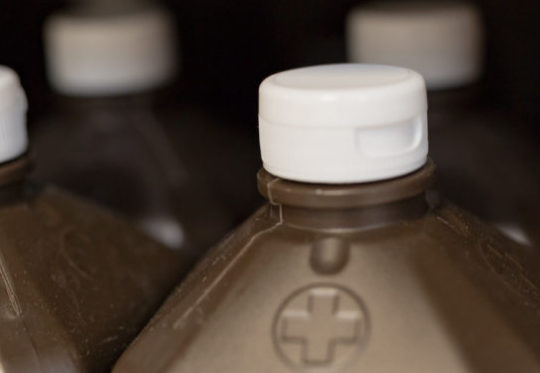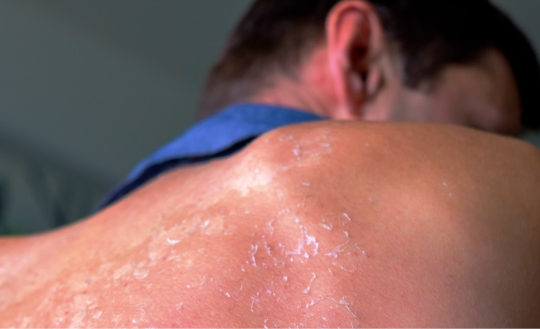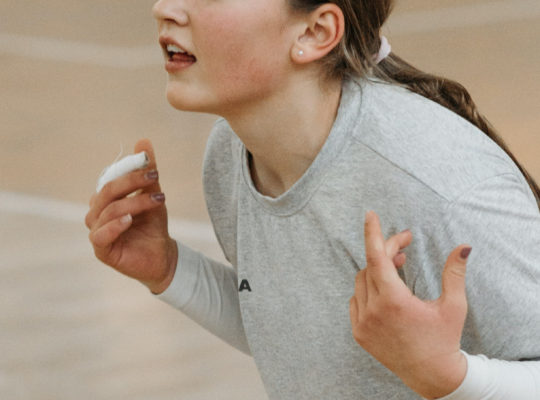Rubbing alcohol is one of the most common household antiseptics out there, it is made of isopropyl alcohol, and water.
Rubbing alcohol is not a perfect antiseptic or disinfectant. It evaporates very quickly at room temperature, is unable to kill bacterial spores, and does not do a good job of preventing the growth of microorganisms. Hospitals cannot use alcohol to disinfect most of their instruments; instead, they must use ultraviolet light.
This doesn’t mean you need to go buy an ultraviolet ray machine. The CDC and FDA found that 70% rubbing alcohol is perfect for everyday household use. 70% rubbing alcohol is very good at killing the most common bacteria and viruses in homes.
Using Rubbing Alcohol in First Aid
As we’ve covered, rubbing alcohol is really good at killing germs and bacteria around the house. This makes it a very good item to have in both your medicine and custodial cabinets.
Using a paper towel or a cotton swab to clean a wound is very effective at preventing infections. It’s important that you don’t use too much. You could experience skin irritation or have to suffer until it all evaporates. After disinfecting the wound, cover it with an elastic bandage, with a gauze pad if it is bleeding. Properly disinfected and dressed wounds will heal faster, and there will be a lower chance of scars forming.
What About Hydrogen Peroxide?
Hydrogen peroxide is another very common antiseptic and was commonly used in first aid until recently. Hydrogen peroxide has received a lot of attention and has had its medical applications reexamined. The FDA classifies hydrogen peroxide as being “generally recognized as safe” but it can cause skin irritation and severe damage to your eyes. Medical professionals have differing opinions on using hydrogen peroxide to clean your wounds. I would recommend doing your own research on which doctors and clinics are for and against using hydrogen peroxide and make your decision based on that.
If you decide that you will no longer use hydrogen peroxide to clean your wounds, don’t throw it out. It still has plenty of uses, which I will detail later.
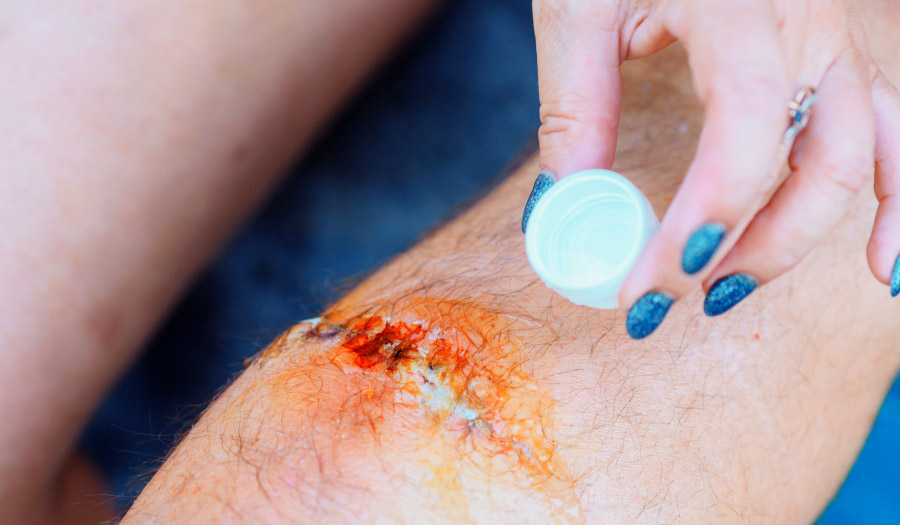
Hydrogen Peroxide and Rubbing Alcohol for Cleaning
Here I will detail a couple of helpful things you can do with both rubbing alcohol (RA) and hydrogen peroxide (HP) outside of cleaning wounds. Unless directed otherwise, use 70% rubbing alcohol.
- RA and HP can disinfect toothbrushes and beauty supplies. Give the head of a toothbrush, makeup-brush, or the working end of a manicure or pedicure tool a quick rinse, dip, or soak of either solution, rinse well with warm water, then let air dry.
- RA and HP can disinfect sponges, greatly extending their lives. Simply soak the sponge in rubbing alcohol or a mixture of 50% hydrogen peroxide and 50% water, then squeeze and let air dry.
- RA and HP can easily disinfect lots of surfaces around the house without leaving stains. Put either RA or HP in a spray bottle for soft surfaces like furniture, and for hard surfaces, a damp cloth or a spritz are very effective at getting rid of bacteria. Don’t use HP or RA for permeable hard surfaces like granite or quartz. When spraying hard surfaces with HP, make sure to wipe it off with a wet cloth. The rubbing alcohol will evaporate on its own, hydrogen peroxide will not.
- HP is a great way to sanitize your cutting boards. HP will efficiently clean and sanitize the scratches in both wood and plastic cutting boards. Either spray, or scrub with a clean sponge and then rinse.
Rubbing Alcohol For Household Cleaning
- 90%+ RA is a great cleaner for electronics. Using a small amount of RA on a cloth or cotton swab can quickly and efficiently disinfect your electronic devices without harming them.
- RA is also great for removing frost from glass. For your car’s windshield use a 2:1 mixture of RA and water in a spray bottle to make scraping much easier. For your windows use 8:1 water to rubbing alcohol on a cloth.
- RA can clean jewelry. Soak the item in RA for a few minutes and then wipe with a clean cloth to help restore shine.
Takeaways for Rubbing Alcohol and Hydrogen Peroxide
Overall, HP and RA are extremely versatile tools to have around the house. Rubbing alcohol is a great first aid tool, especially with prepackaged wipes so you don’t have to worry about getting the right dosage. Hydrogen peroxide can also be helpful in first aid but is more likely to cause irritation.

